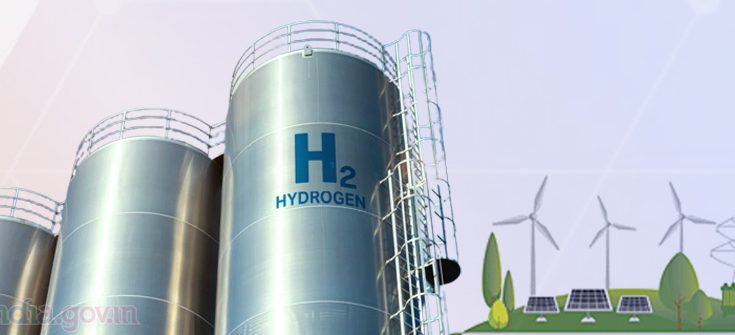#GreenEnergy, #GreenHydrogen, #GreenAmmonia, #NationalHydrogenMission, #EcofriendlyFuel
New Delhi/IBNS-CMEDIA: : Eco-friendly fuels, Green Hydrogen (GH2) and green ammonia, considered as the future energy sources globally, have the potential to attract investments totaling USD 125 billion (equivalent to approximately Rs 10.43 lakh crore) in India by 2030, as per a research report by Avendus Capital.
Themed “Green Hydrogen, the next frontier in energy transition” the research highlights that the surge in green fuel adoption will be steered by increased focus on sustainability, economic feasibility, and governmental initiatives promoting their extensive utilization through robust regulations, reported news agency ANI.
GH2, produced via electrolysis of water using power sourced from renewable energy, stands out for its zero greenhouse gas emissions.
Worldwide, there’s ongoing research aimed at harnessing green hydrogen as a fuel to aid nations in achieving their net-zero emission objectives.
According to the Avendus Capital report, green hydrogen is progressively becoming more competitive compared to existing production methods.
Despite a notable reduction of over 40 percent in production costs over the last eight years, its commercial viability remains limited due to relatively high costs.
India boasts an annual hydrogen demand of nearly 6MMTPA, positioning itself as the third-largest global consumer of hydrogen.
Furthermore, the nation stands out as one of the most cost-effective renewable electricity producers globally, endowed with abundant water sources, and emerging as a prominent global manufacturing hub.
These factors constitute crucial elements for enabling the production of competitively priced green hydrogen.
In a bid to foster the green hydrogen industry, the Indian government has introduced incentives for electrolyzer and green hydrogen production through initiatives like the Production Linked Incentive schemes (PLIs), with an investment exceeding USD 2.4 billion.
Various other incentives have been announced under the National Hydrogen Mission, while state governments are offering additional support to bolster the green hydrogen ecosystem.
Recent tenders under programs like the Solar Energy Corporation of India (SECI) witnessed the involvement of numerous prominent Indian corporates across the green hydrogen value chain.
Several global electrolyzer manufacturers, including John Cockerill, Stiesdal, and Ohmium, have initiated their green hydrogen plans in India through joint ventures and strategic partnerships.
European countries and Japan, lacking the necessary resources for cost-competitive green hydrogen production, are devising import plans and establishing import-focused infrastructure near ports.
India, with its comparatively lower production costs, geographical proximity to importing nations, and established export infrastructure, is increasingly being viewed as a significant green hydrogen hub.
The Indian government has already earmarked three green hydrogen/ammonia hubs near the ports of Kandla, Paradip, and Tuticorin.
Many players in the green hydrogen sector are forging strategic partnerships with existing ammonia facilities near ports to cater to export demand and are also developing export-oriented offtake arrangements.





